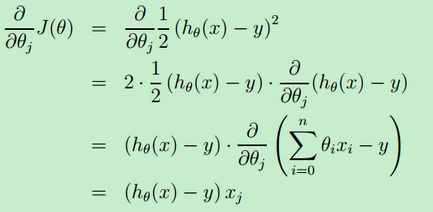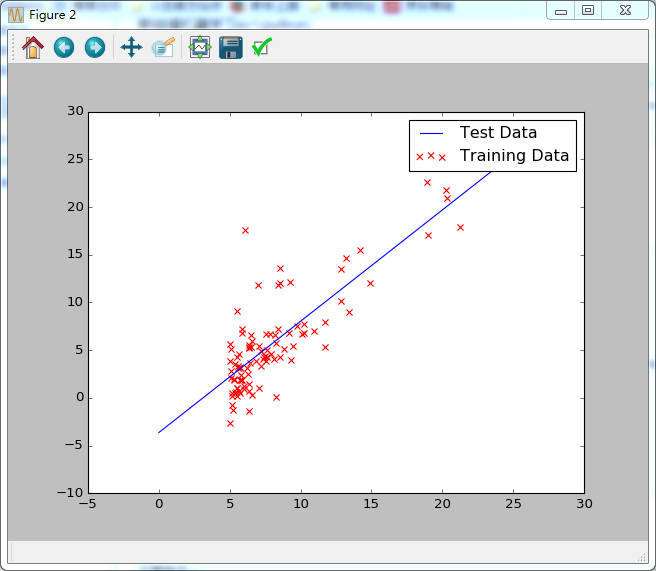斯坦福機器學習ex1.1(python)
阿新 • • 發佈:2017-10-03
blog com cnblogs div pan .com tlab 表示 def
使用的工具:NumPy和Matplotlib
NumPy是全書最基礎的Python編程庫。除了提供一些高級的數學運算機制以外,還具備非常高效的向量和矩陣運算功能。這些對於機器學習的計算任務是尤為重要的。因為不論是數據的特征表示也好,還是參數的批量設計也好,都離不開更加快捷的矩陣和向量計算。而NumPy更加突出的是它內部獨到的設計,使得處理這些矩陣和向量計算比起一般程序員自行編寫,甚至是Python自帶程序庫的運行效率都要高出許多。
Matplotlib是一款Python編程環境下免費試用的繪圖工具包,其工作方式和繪圖命令幾乎和matlab類似。
操作步驟:
1.數據初始化,將數據存放到x,y當中。
print("Plotting Data...\n") fr=open(‘ex1data1.txt‘) arrayLines=fr.readlines() numberOfLines=len(arrayLines) x=np.zeros((numberOfLines,1)) y=np.zeros((numberOfLines,1)) index=0 for line in arrayLines: line = line.strip() listFormLine = line.split(",") x[index, :]= listFormLine[:1] y[index] = listFormLine[-1] index += 1
2.求取代價函數(cost function)

def computeCost(X,y,theta): m=X.shape[0] XMatrix=np.mat(X) yMatrix=np.mat(y) thetaMatrix=np.mat(theta) J=1/(2*float(m))*sum((np.array(XMatrix*thetaMatrix-yMatrix))**2) return J
3.采取梯度下降算法進行計算,首先將theta0與theta1都初始化為0,再使alpha為0.01,進行計算


def gradientDescent(X,y,theta,alpha,iterations): m=len(y) J_history=np.zeros((iterations,1)) theta_s=theta.copy() for i in range(iterations): theta[0]=theta[0]-(alpha/m)*np.sum(np.mat(X)*np.mat(theta_s)-np.mat(y)) p1=np.mat(X)*np.mat(theta_s)-np.mat(y) p2=X[:,1]*p1 theta[1]=theta[1]-(alpha/m)*p2 theta_s=theta.copy() J_history[i,:]=computeCost(X,y,theta) return theta
4.將數據可視化顯示

詳細代碼:https://github.com/xingxiaoyun/StanfordMachineLearning/blob/master/ex1.py
斯坦福機器學習ex1.1(python)
